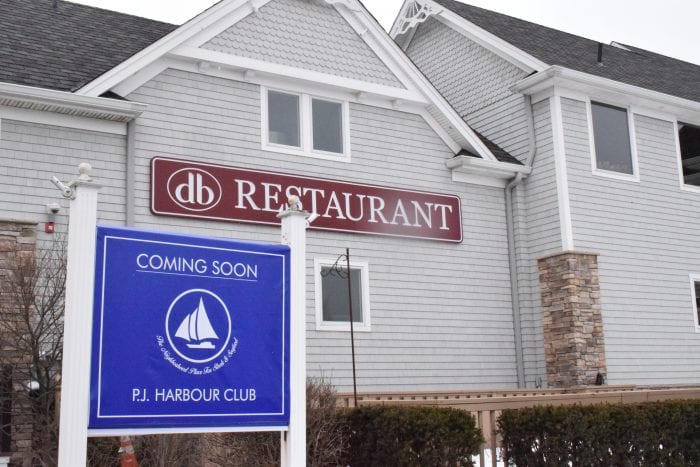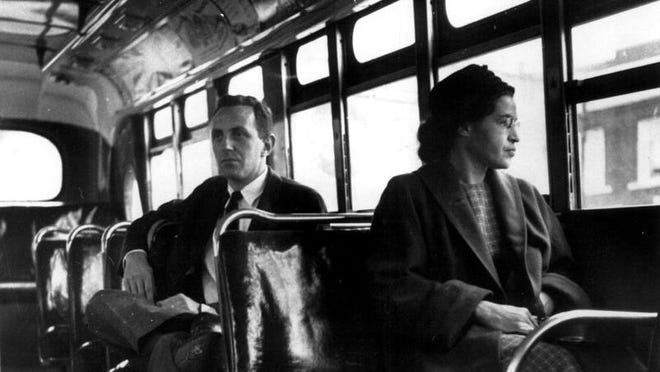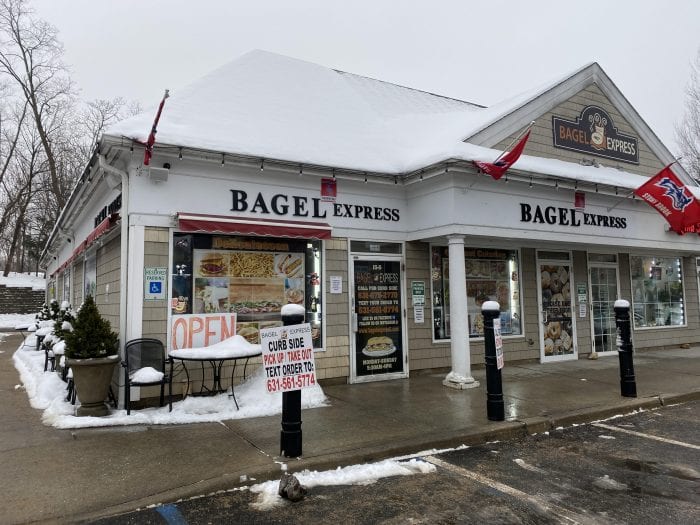A new Italian steakhouse with innovative cuisine is coming to Port Jefferson village, and it all started because of two friends playing golf.
Joe Guerra, of Port Jefferson, and Michael Russell met about a year ago at the Port Jefferson Country Club. While the two were playing, they got to talking — they decided to become business partners and open up a restaurant.
And that’s how the P.J. Harbour Club was born.

Guerra has over 40 years of restaurant, hotel, catering and club experience locally and globally. He studied at the Culinary Institute of America and received classical training — so when he retired from the industry, not too long ago, he just wanted to play golf.
“And then he convinced me to come back,” he laughed, gesturing at Russell.
Russell, an East Setauket native, worked for several major Wall Street firms and said has been a partner and investor for restaurants throughout his career. When Guerra mentioned opening a new space, the active community member — who retired in April — said, “Why not?”
“It got exciting because of Joe and his experience,” Russell said. “We get along.”
It took about nine months to negotiate the building that once was the home to The Graceful Rose and, as of more recently, Due Baci. The Italian restaurant closed its doors shortly before the COVID-19 pandemic, in January of last year. Last week, the two were able to start renovating the space and make it their own.
“We hit the ground running,” Guerra said. “Since last week, we’ve already done a lot of changes in the place, kitchen-wise, and are going through the permit process.”
The goal is to be a friendly place where everyone in the neighborhood can get together while enjoying good food and a glass of wine.
“People are excited because they know us,” Guerra added. “It’s going to be gathering place where our old friends, our current friends and the new friends that we’re going to be making in the area can meet.”
And the two want to complement the other restaurants throughout the village. They don’t want to compete.
“We know a lot of the people that own the restaurants in the village and they’re all doing a great job,” Russell said. “We’re just a little bit different. Our intention is to be different.”
The restaurant that sits on the second level of 154 W Broadway will bring classic and unique entrees to customers, in a trendy, but comfortable, setting.
Along with the minor cosmetic renovations, Russell said they will be adding dining banquettes to sit in, with photos of Port Jefferson’s history along the walls.
“It’s just something that we wanted to do — it’s not something that we needed to do,” Russell said. “I think that that’s the difference — we want to do this so that the public will really enjoy it.”
The P.J. Harbour Club is anticipating an early spring opening.































